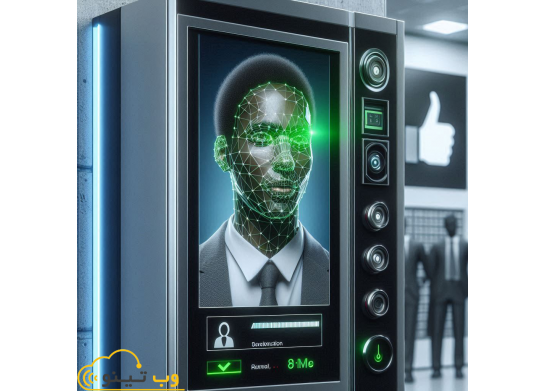

2025-01-05مسعود اکبریان
In today's world, new technologies such as artificial intelligence (AI) are changing and evolving in many aspects of our professional and daily lives. One of the areas that has received the most impact from the advancements of artificial intelligence is human resource management and especially the employee attendance process. Using advanced technologies, intelligent attendance systems provide fast, accurate and efficient solutions for recording working hours and monitoring employee attendance.
1. The concept of presence and absence of artificial intelligence
Traditional attendance systems typically involve the use of ID cards, fingerprint systems, or manual check-in and check-out, which may introduce errors such as human error, fraud, and management problems. But with the use of artificial intelligence, these processes have improved dramatically. Attendance systems based on artificial intelligence can use advanced methods such as facial recognition, voice recognition, and even employee behavior tracking to accurately record entry and exit times.
2. The main features of attendance systems with artificial intelligence
1. Facial recognition and biometrics: One of the important features of attendance systems based on artificial intelligence is facial recognition. Using smart cameras and advanced facial recognition algorithms, these systems can automatically record employee attendance. This feature is especially useful in companies or organizations that have a large number of employees and need high accuracy in attendance registration. Also, this method prevents fraud such as entering and exiting instead of another person.
2. Real-time data processing: AI systems are capable of real-time data processing. This means that employees cannot enter or leave late, and the system will automatically and quickly record their entry and exit times. Additionally, these systems can intelligently generate attendance reports and send them to managers.
3. Optimum management of work shifts: Using artificial intelligence in the management of work shifts makes the process of adjusting and coordinating shifts to be done automatically and optimally. AI systems can adjust work shifts based on organizational needs, employee preferences, and attendance history. This helps reduce interference, improve productivity, and reduce human error.
4. Analysis of behavior and work patterns: Artificial intelligence can analyze the behavior patterns of employees and produce accurate and practical reports for managers. For example, the system can simulate peak working hours, employee attendance at work, and even the duration of breaks. This information helps managers to improve work processes and make better decisions regarding the allocation of human resources.
5.
3. Advantages of using attendance systems with artificial intelligence
1. Reduction of human errors: One of the biggest problems of traditional attendance systems is human errors. Manually entering information, using cards and fingerprints can all be subject to errors. Artificial intelligence reduces these errors significantly by automating attendance registration processes.
2. Increasing accuracy and transparency: artificial intelligence-based systems enable more accurate and transparent recording of working hours. There are no mistakes in recording the hours of entry and exit, and the information is provided to managers accurately and in real time.
3. Saving time and costs: using artificial intelligence attendance and absence systems not only saves time, but also reduces the costs associated with managing the attendance and absence of employees. Manual processes no longer require constant monitoring, and shift management and attendance reports are automated.
4. The possibility of more detailed analysis and performance prediction: using the data collected from AI attendance systems, more advanced analyzes can be performed. For example, predicting possible problems in the presence of employees or identifying inefficient patterns can be done in advance.
4. Challenges and limitations
Despite all the benefits of artificial intelligence systems in attendance management, there are still some challenges. Among these challenges, we can mention issues such as employee privacy concerns, high initial costs for implementing artificial intelligence systems, and the need to train and familiarize employees with these technologies. In addition, to implement such a system, certain infrastructures may be required in organizations.
5. The future of attendance systems with artificial intelligence
Due to the growing trend of artificial intelligence and machine learning technologies, it can be expected that in the future, attendance and absence systems with artificial intelligence will become even more accurate, advanced and intelligent. In addition to identifying attendance, these systems can automatically analyze employee performance, productivity, and even their physical and mental health status.
conclusion
The presence and absence of artificial intelligence has significantly improved human resource management processes. By increasing accuracy, reducing human errors and providing advanced analytics, these systems help organizations manage employee productivity and performance in the best possible way. Although the implementation of these technologies may require initial investment and training of employees, their long-term benefits for organizations are undeniable.
Categories
Popular Categories